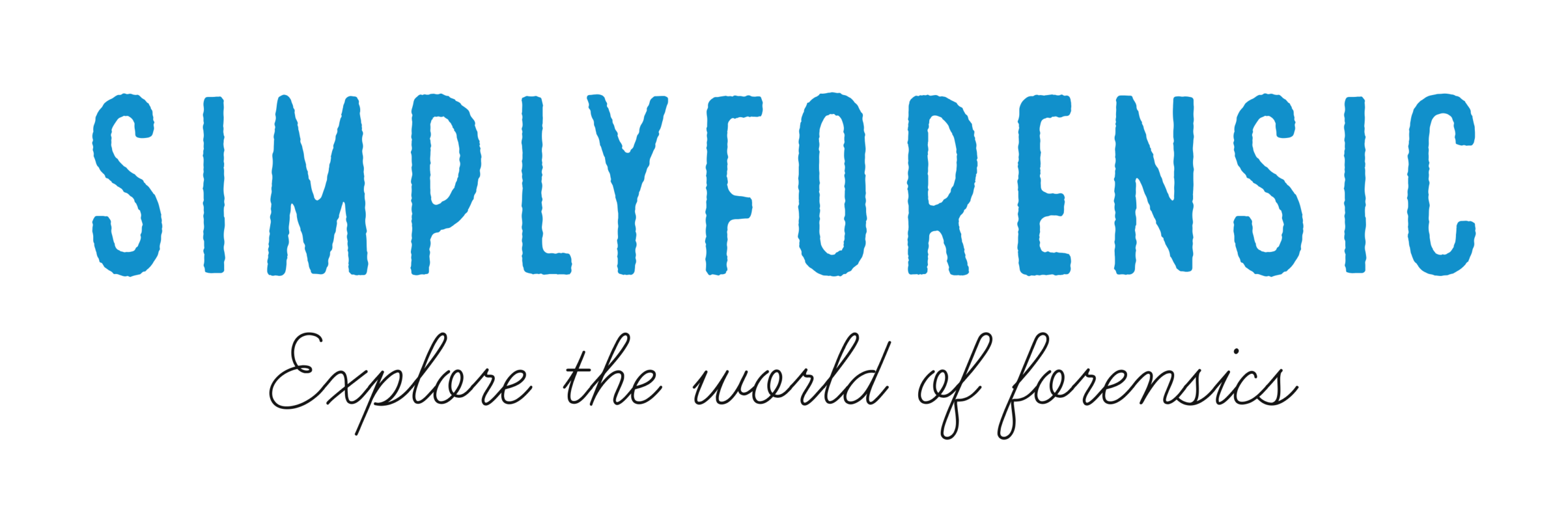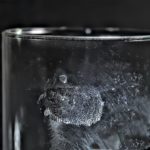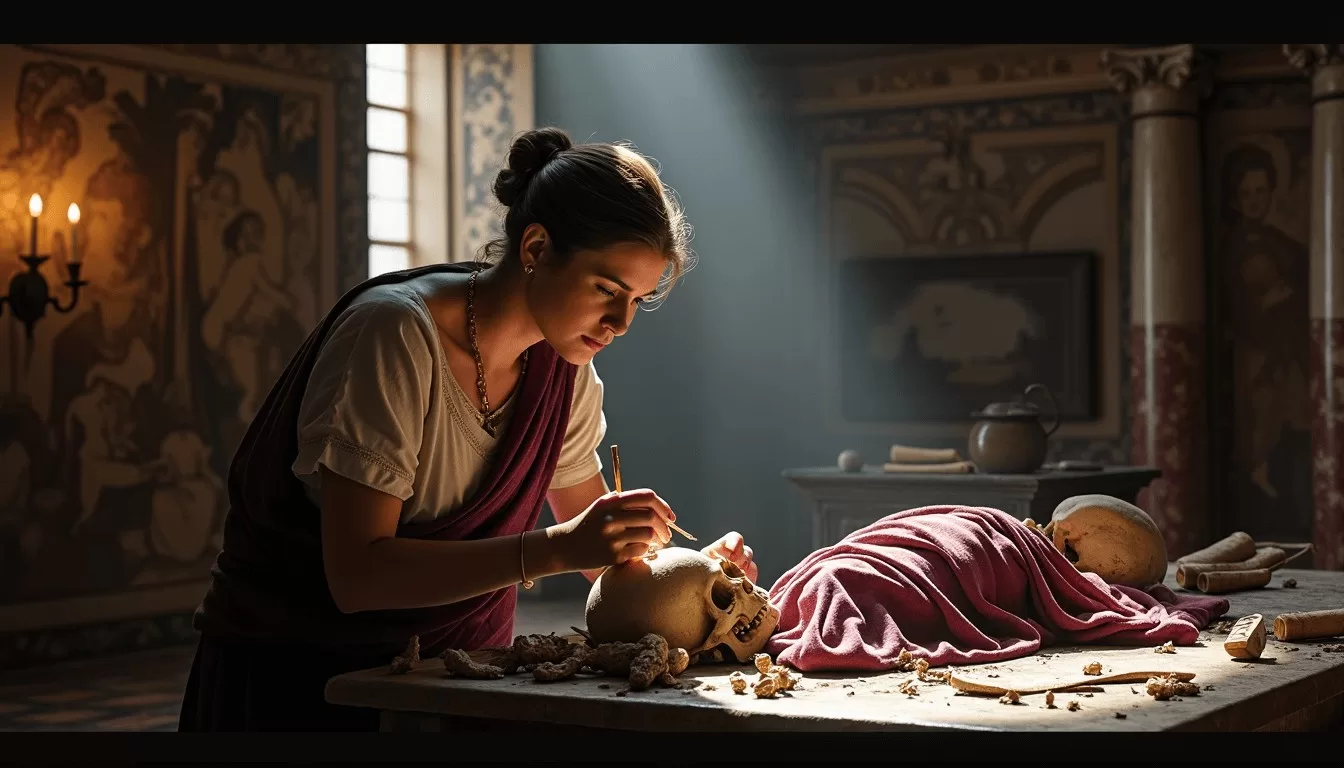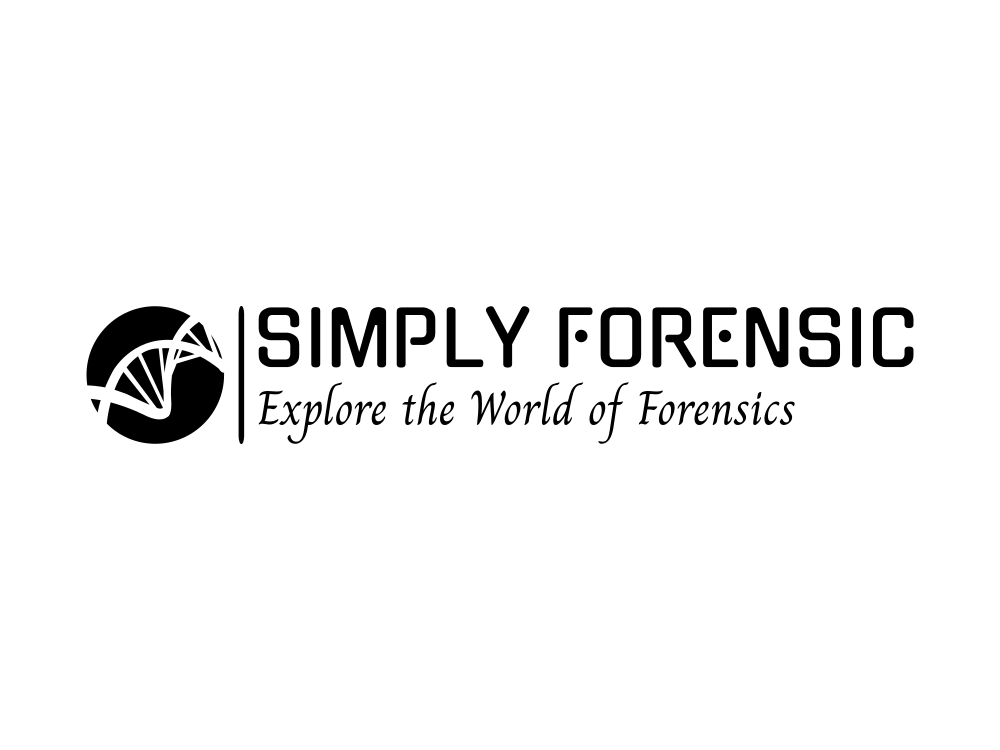Teeth can withstand temperatures up to 1600°C, making them the most resilient evidence Evidence is any form of proof, such as objects, materials, or scientific findings, presented to establish or disprove a fact in a legal proceeding. It is used to reconstruct events and link or exclude individuals Read Full Definition in forensic investigations. This remarkable durability makes dental evidence invaluable when other identification methods fail.
Evidence is any form of proof, such as objects, materials, or scientific findings, presented to establish or disprove a fact in a legal proceeding. It is used to reconstruct events and link or exclude individuals Read Full Definition in forensic investigations. This remarkable durability makes dental evidence invaluable when other identification methods fail.
- Fundamentals of Forensic Odontology
- Advanced Dental Identification Techniques
- Dental Record Analysis and Documentation
- Bite Mark Analysis Methods
- Key Steps in Bite Mark Evidence Collection
- Classifications of Bite Marks
- Methods of Bite Mark Comparison
- Challenges in Bite Mark Analysis
- Age and Gender Determination Methods
- Mass Disaster Victim Identification
- Modern Forensic Technologies
- Legal and Ethical Considerations
- Quality Management in Forensic Odontology
- Conclusion
- FAQs
- What are the main applications of forensic odontology?
- How do forensic dentists perform dental identification?
- What role does technology play in modern forensic odontology?
- How accurate is forensic dental identification?
- What ethical considerations are important in forensic odontology?
- References & Suggested Readings
Forensic odontology harnesses the unique characteristics of human dentition to unlock crucial evidence in criminal cases and mass disasters. Expert odontologists analyze dental patterns, compare records, and examine bite marks to establish identity and support legal proceedings. Their specialized knowledge bridges the gap between dental science and criminal justice, offering insights that conventional forensic methods often miss.
The field has evolved beyond traditional dental examinations. Modern practitioners combine established techniques with 3D imaging, DNA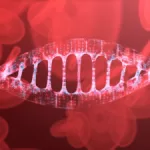 DNA, or Deoxyribonucleic Acid, is the genetic material found in cells, composed of a double helix structure. It serves as the genetic blueprint for all living organisms. Read Full Definition analysis, and computer-aided comparison tools. These scientific advancements enhance the precision of dental forensics, particularly in complex criminal investigations and disaster scenarios. This article examines the core principles, methods, and real-world applications of forensic odontology, offering essential knowledge for forensic students, professionals, and enthusiasts exploring this vital discipline.
DNA, or Deoxyribonucleic Acid, is the genetic material found in cells, composed of a double helix structure. It serves as the genetic blueprint for all living organisms. Read Full Definition analysis, and computer-aided comparison tools. These scientific advancements enhance the precision of dental forensics, particularly in complex criminal investigations and disaster scenarios. This article examines the core principles, methods, and real-world applications of forensic odontology, offering essential knowledge for forensic students, professionals, and enthusiasts exploring this vital discipline.
Fundamentals of Forensic Odontology
Scientific analysis of dental evidence marks the evolution of forensic odontology from basic identification methods to a sophisticated discipline. This transformation reflects the field’s essential role in modern criminal justice and disaster response.
Historical Development and Evolution
Forensic odontology emerged through groundbreaking cases that shaped modern practice. In 1814, Dr. James Alexander pioneered dental evidence in courtrooms, presenting crucial testimony about a maxillary denture match in Scotland. The field gained a scientific foundation when Dr. Oscar Amoëdo, recognized today as the field’s founding father, published his landmark text in 1898.
Notable milestones shaped the discipline’s growth:
- Paul Revere conducted America’s first forensic dental identification
- Scientists established comparative dental analysis methods
- Experts developed standardized documentation systems
- Teams integrated digital imaging capabilities
- Practitioners adopted dental DNA analysis techniques
Scope and Applications
Today’s forensic odontologists serve justice through multiple specialized functions:
- Human Remains Identification: Dental structures survive extreme conditions, offering reliable evidence in disasters and criminal cases
- Age and Gender Determination: Dental patterns reveal crucial biological markers1
- Bite Mark Analysis: Pattern examination supports criminal investigations
- Disaster Victim Identification (DVI): Dental records enable mass casualty identification
Scientific Principles and Methodology
Forensic odontology works on the principle that no two people have exactly the same dental imprints. Extractions, fillings, chipped, gapped, or closely spaced teeth can all be used to identify who the teeth marks are from. Some teeth may even be twisted or tilted. Even with individuals who have had their teeth straightened through the use of braces, there will be some distinctive features that can be used to identify them based on their dental work.
The uniqueness of human dentition forms the scientific cornerstone of forensic odontology. Each person’s oral cavity presents distinct characteristics, creating an identifiable dental signature. Dental experts meticulously document these features, establishing reference records for future identification needs. The analysis focuses on specific markers, including dental work, extractions, surface patterns, and root structures.
Modern forensic odontologists blend traditional examination skills with digital imaging, spectroscopic analysis, and computer-aided tools. Quality protocols guide evidence handling and analysis procedures, securing forensic odontology’s position as a vital forensic science Discover the fascinating field of Forensic Science, the application of scientific principles to legal matters. This post delves into its many disciplines, from DNA analysis to crime scene investigation, its importance in the justice system, Read Full Definition discipline.
Discover the fascinating field of Forensic Science, the application of scientific principles to legal matters. This post delves into its many disciplines, from DNA analysis to crime scene investigation, its importance in the justice system, Read Full Definition discipline.
Advanced Dental Identification Techniques
Scientific advancements, such as precise"Precise" refers to the degree of closeness or consistency between multiple measurements or values taken under the same conditions. It indicates how well these measurements agree with each other, regardless of whether they are accurate Read Full Definition digital tools and artificial intelligence, shape modern forensic dental identification. Expert odontologists harness these technologies to achieve unprecedented accuracyIn scientific and measurement contexts, "accuracy" refers to the degree of proximity or closeness between a measured value and the true or actual value of the measured quantity. Accuracy indicates how well a measurement reflects Read Full Definition in their examinations.
Digital Imaging Technologies
Digital radiography marks a breakthrough in forensic dental analysis, cutting radiation exposure by 90% compared to type D film radiographs [3]. Radiovisiography captures detailed dental structures in ante- and post-mortem images. Specialized software enables precise image manipulation for alignment, while digital systems preserve dental records for decades with exceptional integrity [34].
Mass disaster scenarios benefit from NOMAD hand-held X-ray units. These portable devices operate at 60 kV peak potential and 2.3 mA anode current [5], offering crucial features:
- Reduced radiation leakage
- Minimal backscatter radiation
- Lead-filled acrylic shield protection
- Battery-powered operation
3D Scanning and Analysis
Three-dimensional scanning offers unparalleled precision in documenting and analyzing dental features. Scientific studies confirm that 3D CBCT imaging provides superior accuracy over traditional 2D CT reconstruction [3]. This non-invasive method is particularly useful in studying malocclusions, missing teeth, and anatomical variations [7].
AI-Assisted Identification Methods
AI-driven systems enhance forensic dental analysis by automating tasks such as age estimation, gender determination, and dental record matching. These technologies streamline workflows and reduce human error, proving especially useful in high-pressure environments.
AI systems enhance forensic odontology through rapid, precise dental image analysis [8]. Current models excel at:
- Dental image analysis and matching
- Gender determination from dental remains
- Age estimation through dental patterns
- Automated dental record comparison [8]
These systems identify specific tooth types on radiographs while supporting facial reconstructionFacial approximation refers to the process of estimating the living facial image of a person from the evidence presented by a recovered skull. Read Full Definition through 3D modeling [8]. Mass disaster response teams rely on this technology for swift victim identification [9]. Research validates AI accuracy rates matching trained examiners, while removing human biasThe difference between the expectation of the test results and an accepted reference value. Read Full Definition from the identification process [9].
Digital imaging, 3D scanning, and AI analysis unite to strengthen forensic dental identification. This technological synergy proves particularly valuable when examining degraded remains or processing multiple cases simultaneously.
Dental Record Analysis and Documentation
Dental records serve as vital links between clinical practice and forensic investigations. The American Dental Association reports a dramatic shift in record-keeping practices, with computer usage in dental offices rising from 11% in 1984 to over 85% by 2009 [10].
Standard Documentation Protocols
Professional dental records demand meticulous attention to detail through essential components:
- Patient identification and medical history
- Clinical findings and treatment plans
- Radiographs and dental images
- Progress notes and correspondence
- Informed consent documentation
- Quality assuranceQuality assurance (QA) is a comprehensive set of activities and processes to ensure the overall quality and reliability of the work conducted within a laboratory. QA is a proactive approach that focuses on improving scientific Read Full Definition records
The American Dental Association Standards Committee on Dental Informatics (SCDI) guides practitioners through standardized protocols for information exchange, clinical informatics, and forensic odontology informatics [11]. These protocols create seamless data Information in analog or digital form that can be transmitted or processed. Read Full Definition sharing between dental and medical professionals.
Information in analog or digital form that can be transmitted or processed. Read Full Definition sharing between dental and medical professionals.
Digital Record Management
Electronic Dental Records (EDRs) reshape modern practice management, with 72% of dental practices embracing chairside computers [10]. Digital platforms streamline administrative tasks while enhancing patient care quality. Research shows 79% of dental professionals rank internet access as “somewhat to very essential” for daily operations [10].
Modern digital systems store and organize various record types efficiently. Nearly 64% of practices now maintain their clinical images, radiographs, and treatment documentation digitally [10]. Forensic odontologists benefit from this digital evolution through swift access to ante-mortem and post-mortem records.
Quality Assurance in Record Keeping
Dental record integrity depends on systematic verification processes. ADA-recommended internal audits examine:
- Record accuracy and completeness
- Radiograph quality and proper labeling
- Treatment plan documentation
- Progress note accuracy
- Compliance with retention requirements
Practice data reveals sustained improvement in documentation compliance when auditSystematic, independent and documented process for obtaining audit evidence and evaluating it objectively to determine the extent to which audit criteria are fulfilled. Read Full Definition systems operate over extended periods12. Record retention requirements follow jurisdiction-specific guidelines, with ADA standards requiring retention for 7 years from the date of last entry [12].
Quality assurance protocols safeguard record integrity for both patient care and forensic needs. Successful practice management relies on robust standards suitable for specialized clinics and small practices alike [11].
Bite Mark Analysis Methods
Bite marks can play a pivotal role in forensic investigations, offering unique evidence linking suspects to victims or crime scenes. These marks may appear on victims (from an attacker), suspects (from victims acting defensively), or inanimate objects at the crime scene, such as food or chewing gum. While they are most commonly associated with sexual and physical assault cases, bite marks also hold significance in other criminal contexts.
Key Steps in Bite Mark Evidence Collection
When bite marks are identified, meticulous procedures must be followed to accurately preserve and analyze the evidence. The American Board of Forensic Odontology (ABFO) has established guidelines to ensure the integrity of bite mark evidence:
Classifications of Bite Marks
Bite marks can be categorized into seven classifications based on the type of injury:
- Hemorrhage: A small bleeding spot.
- Abrasion
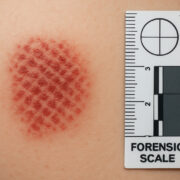
- Contusion: Bruising caused by ruptured blood vessels.
- Laceration: Torn or punctured skin.
- Incision: A clean puncture wound.
- Avulsion: Removal of a section of skin.
- Artefact: Tissue bitten off from the body.
The severity and duration of a bite mark depend on the force applied and the length of time the victim was bitten. However, various factors—such as time-dependent changes, soft tissue damage, and quality of documentation—affect the accuracy and reliability of bite mark analysis.
Methods of Bite Mark Comparison
Forensic odontologists compare bite marks with dental impressions or other records to link evidence to suspects. The standard methods include:
- Transparent Overlays: Record the edges of the suspect’s teeth on acetate sheets, allowing for comparison with the bite mark.
- Dental Casts: Create dental molds to identify bite marks more precisely during advanced stages of the investigation.
Challenges in Bite Mark Analysis
Despite its utility, bite mark analysis has faced scrutiny for its reliability. Key concerns include:
- Skin as a Medium: The elasticity and irregularity of human skin can distort bite mark impressions, making it an unreliable substrate.
- Environmental Factors: Movement, stretching, and environmental changes can alter the appearance of bite marks.
- Lack of Standardization: There is no universally accepted method for evaluating and comparing bite marks, which limits consistency and accuracy.
Bite mark analysis remains a valuable yet controversial aspect of forensic odontology. While it provides crucial evidence in linking suspects to crimes, its reliability is limited by the inherent variability of human skin and the lack of standardized methodologies. As forensic science evolves, integrating advanced technologies such as 3D imaging, AI, and improved documentation techniques will enhance the accuracy and credibility of bite mark evidence.
Age and Gender Determination Methods
Dental structures tell stories of age and gender through their unique biological markers. Their resistance to environmental factors and predictable developmental patterns make teeth reliable witnesses in forensic investigations [13].
Dental Development Assessment
Expert odontologists uncover age-related evidence through systematic evaluation of:
- Crown and root formation stages
- Tooth eruption sequence
- Pulp chamber volume changes
- Secondary dentin formation
- Root apex development
Forensic practitioners favor the Demirjian method, which examines seven left permanent mandibular teeth. Scientific validationValidation, often referred to as method validation, is a crucial process in the laboratory when introducing a new machine, technology, or analytical technique. It involves a series of systematic steps and assessments to ensure that Read Full Definition supports this approach, yielding correlation coefficients of 0.90 across total samples and 0.89 in gender-specific analyses [14].
Radiographic Analysis Techniques
Radiographic examination unlocks hidden details crucial for age estimation. Digital imaging reveals restoration shapes and anatomical structures concealed from clinical view [15]. Modern computer-based matching software enhances identification speed and precision [15].
The tooth coronal index (TCI) method reveals strong links between chronological age and pulp chamber dimensions [13]. Panoramic radiographs benefit young subject analysis by tracking dental development from initial crown calcification through root completion [13].
Statistical Methods in Age Estimation
Statistical innovations sharpen age estimation accuracy. The Willems method refines Demirjian’s approach, showing enhanced precision across population groups [13]. Research validates these methods, with India-specific formulas achieving age estimates within one year for both genders [14].
Gender determination reaches 74% accuracy through mandibular canine measurements [16]. DNA analysis of dental pulp through PCR amplification offers additional precision, particularly valuable in complex cases [16].
Artificial intelligence brings fresh capabilities to age estimation. Deep neural networks analyze dental radiographs with accuracy matching human experts, while removing subjective bias from the process [17].
Mass Disaster Victim Identification
Dental evidence emerges as a powerful tool in mass disaster scenarios, offering reliable victim identification at manageable costs. Scientific data confirms this effectiveness – dental means identified 79% of 2,416 victims across 50 mass disasters [18].
International Protocols
INTERPOL’s Disaster Victim Identification (DVI) guidelines stand as the global authority for identification procedures19. These protocols guide teams through essential steps:
- Scene documentation and recovery
- Ante-mortem data collection
- Post-mortem examination
- Data reconciliation and comparison
- Quality assurance measures
Since its first publication in 1984, the INTERPOL DVI manual has championed multidisciplinary approaches [20]. The 2004 Tsunami disaster proved these methods’ worth, with dental examination identified in 61% of victims [21].
Team Coordination Strategies
Success in DVI operations flows from precise coordination among expert teams:
- Forensic Pathologists
- Forensic Odontologists
- Fingerprint Experts
- DNA Specialists
- Anthropologists
- Quality Assurance Officers
Team excellence stems from regular training exercises and scenario preparation [20]. Experience shows peak efficiency when single leaders manage ante-mortem dental records [19].
Case Management Systems
Modern DVI teams harness sophisticated software platforms like DVI System International (Plass Data®) for victim data processing [20]. These systems excel in:
- Data Entry: Swift recording of post-mortem findings
- Record Management: Unified ante-mortem and post-mortem data storage
- Automated Comparison: Digital dental characteristic matching
- Quality ControlQuality control (QC) refers to a series of activities and measures conducted on individual laboratory tests or analyses to verify and ensure the accuracy and reliability of the results. QC is a reactive approach that Read Full Definition: Systematic data verification
Identification success rates fluctuate based on disaster type, dental injury extent, and record availability [21]. Developing nations often choose dental methods over costly DNA testing for practical identification solutions [19].
Technical advances in radiographic tools and data systems strengthen DVI operations [19]. Yet gaps in global dental record standardization pose ongoing challenges, highlighting needs for unified recording practices worldwide [21].
Modern Forensic Technologies
Molecular biology and analytical technologies unite to sharpen forensic odontology’s scientific edge. These sophisticated tools bring unprecedented precision to dental evidence analysis.
DNA Analysis in Dental Forensics
Teeth stand guard over precious genetic material, their hardy structure protecting DNA from environmental assault. Dental pulp houses rich genomic information, secured within tissues that withstand temperatures up to 1600°C [22]. Scientists access this DNA through multiple extraction paths:
- Conventional endodontic access
- Vertical splitting
- Horizontal sectioning
- Cryogenic grinding with liquid nitrogen
- Crushing method for maximum yield
Short tandem repeat (STR) typing leads to forensic DNA analysis, which delivers powerful individual identification capabilities [22]. When conventional samples fail, teeth yield mitochondrial DNA, which is particularly crucial for degraded remains [22]. Research confirms that teeth match traditional sources in DNA quality and extraction success [23].
Spectroscopic Techniques
Spectroscopic analysis unveils dental materials’ hidden properties while preserving sample integrity [24]. Key methods serve distinct purposes:
- Infrared Spectroscopy (IR): Identifies functional groups and chemical compounds
- Raman Spectroscopy: Analyzes geometric structure and chemical bonds
- UV-Visible Spectroscopy: Evaluates dental adhesive resins
- X-ray Spectroscopy: Tests material composition and coating thickness
Raman microspectrometry excels in age estimation through precise molecular fingerprinting. This technique maps chemical components without destroying valuable evidence [25].
Computer-Aided Comparison Tools
Digital intelligence reshapes forensic dental analysis through precise record comparison tools. Digital imaging technologies reveal minute dental details while AI systems recognize subtle patterns [26].
Virtual reality and augmented reality open new investigative paths. These platforms enable:
- Virtual crime scene dental examinations
- Remote expert collaboration
- Detailed 3D comparative analysis
While AI-powered systems cut crown design time by 75%, human expertise remains paramount. Studies reveal experienced technicians surpass AI accuracy in specific tasks [27].
Each technological advance strengthens the forensic odontologist’s toolkit. DNA analysis, spectroscopic methods, and digital tools combine to create powerful investigative capabilities, pushing the boundaries of dental forensics forward.
Legal and Ethical Considerations
Legal mandates and ethical duties guide forensic odontologists through modern judicial proceedings. Court scrutiny demands unwavering adherence to scientific methods and testimony standards.
Expert Testimony Guidelines
Expert witnesses shoulder weighty responsibilities in court proceedings. The American Board of Forensic Odontology (ABFO) mandates strict objectivity and ethical conduct during testimony [28]. Successful court presentation demands:
- Transparent discussion of evidence reliability
- Clear acknowledgment of method limitations
- Professional conduct and appearance
- Thorough case knowledge
- Jury-friendly language
Scientific data reveals troubling patterns in expert testimony reliability. Flawed bite mark evidence alone led to 30 wrongful convictions, resulting in 424 years of unjust imprisonment [29].
Evidence Handling Protocols
Dental evidence demands meticulous handling to maintain court admissibility. Standard protocols guide each step:
- Initial documentation and photography
- Proper sterilization of instruments
- Use of appropriate protective equipment
- Implementation of chain of custodyChain of custody - The process used to maintain and document the chronological history of the evidence. Documents record the individual who collects the evidence and each person or agency that subsequently takes custody of Read Full Definition procedures
- Secure storage and preservation methods
Research validates standardized protocols as pillars of field reliability30. Digital documentation systems strengthen record integrity while streamlining evidence management.
Professional Ethics and Standards
Scientific truth is paramount in forensic odontology ethics. Expert witnesses serve justice by providing factual, unbiased testimony rather than pursuing specific legal outcomes [31].
The US National Commission on Forensic Science, established in February 2014, sparked crucial reforms. Their call for a dedicated standards board aims to fortify scientific validity in forensic evidence [1].
Quality Management demands rigorous standards:
- Mandatory proficiency testing for certified practitioners
- Regular peer review of findings
- Continuous professional development
- Adherence to international standards
Bite mark analysis faces mounting scientific challenges. Research exposes fundamental flaws in its underlying principles and statistical validation [1]. The Innocence Project documents numerous exonerations in which DNA evidence overturned bite mark convictions [29].
Professional conduct requires strict confidentiality throughout case handling. Quality control measures and peer review strengthen analytical reliability [30], safeguarding both justice and scientific integrity.
Quality Management in Forensic Odontology
Scientific excellence in forensic odontology rests upon meticulous quality management practices. Field studies confirm that standardized protocols slash error rates in forensic dental identification [32].
Accreditation Requirements
Professional excellence begins with ABFO certificationCertification is a process through which a scientist can demonstrate their knowledge and competence in a particular field or in performing specific assays. It involves meeting established standards and requirements set by a certifying body. Read Full Definition standards. The American Board of Forensic Odontology demands unwavering commitment to quality through [33]:
- Comprehensive procedure documentation
- Regular proficiency testing and education
- Standardized protocol implementation
- Quality assurance program maintenance
- External peer review participation
FEPAC-accredited programs shape tomorrow’s experts through superior educational standards. Graduate performance data shows higher competency levels among students from accredited programs [34].
Validation Procedures
Quality assurance thrives on systematic validation approaches. IOFOS guidelines advocate A person who aligns themselves with the patient, providing emotional support, referral services for follow-up, contact with social services, legal assistance, arrangements for transportation, presence in court, and for other needs. Read Full Definition paired expert examinations to strengthen findings [35]. Success depends on key steps:
A person who aligns themselves with the patient, providing emotional support, referral services for follow-up, contact with social services, legal assistance, arrangements for transportation, presence in court, and for other needs. Read Full Definition paired expert examinations to strengthen findings [35]. Success depends on key steps:
- Initial evidence documentation and photography
- Independent analysis by multiple experts
- Cross-verification of findings
- Standardized reporting protocols
- Regular methodology assessment
Dental records serve dual purposes – supporting clinical decisions and legal proceedings. Record accuracy mirrors professional competence and practice strength [32].
Error Rate Analysis
Scientific scrutiny reveals telling patterns in forensic dental analysis. Radiographic matching achieves 89% overall accuracy, though 13% of practitioners fall below 80%. Graded scales from ABFO, DVISYS, and INTERPOL have trimmed false results to approximately 2% [36].
Quality Control Measures shine through digital innovation. While computer tools boost accuracy, seasoned experts still lead in specific tasks. Scale degree assignments show promising consistency (ICC = 0.64) [36].
IOFOS quality guidelines demand systematic documentation [37]:
- Official institutional letterhead use
- Comprehensive case numbering
- Detailed examination records
- Chain of custody tracking
- Proper evidence storage
Current practices reveal gaps – only 8.3% of private centers maintain complete records. Yet student awareness of medico-legal documentation suggests positive future trends [32].
Bite mark analysis faces particular scrutiny, with false identification rates spanning 63.5% to 91% [38]. These findings drive continuous method refinement and quality improvement.
Digital systems strengthen modern quality management, though standardization challenges persist across practice settings [32]. Regular audits and peer review safeguard professional standards while highlighting improvement opportunities.
Conclusion
Forensic odontology stands today as a cornerstone of modern forensic science. Expert practitioners blend time-tested dental examination methods with powerful new tools – 3D imaging, DNA analysis, and artificial intelligence – achieving remarkable precision in human identification.
Scientific rigor has elevated this field beyond simple dental matching. Modern forensic odontology serves justice through criminal investigations, mass disaster response, and legal proceedings. Digital imaging platforms, standardized protocols, and quality management systems work together to deliver reliable results while upholding ethical standards and legal requirements.
Yet challenges persist. Bite mark analysis reliability remains under scrutiny while record-keeping practices vary across facilities. These hurdles drive methodological refinements and validation improvements, strengthening the scientific bedrock of forensic dental analysis.
The horizon holds promise. Artificial intelligence capabilities expand, imaging technologies sharpen, and DNA analysis techniques grow more sophisticated. These advances, guided by strict quality protocols and ethical principles, cement forensic odontology’s position as a vital force in modern forensic science. Through continued evolution, the field stands ready to serve justice through precise victim identification and unwavering scientific integrity.
FAQs
What are the main applications of forensic odontology?
Forensic odontology is primarily used for human identification by comparing dental records, victim identification in mass disasters, age, and gender determination, and analysis of bite marks in criminal investigations.
How do forensic dentists perform dental identification?
Forensic dentists use various techniques, including radiographs, ante- and post-mortem photographs, DNA analysis, and comparison of unique dental features to establish identity. They may also analyze bite marks found on victims, perpetrators, or objects at crime scenes.
What role does technology play in modern forensic odontology?
Modern forensic odontology incorporates advanced technologies such as 3D imaging, AI-assisted analysis, and digital radiography. These tools enhance the accuracy and efficiency of dental identification, particularly in complex cases or mass disaster scenarios.
How accurate is forensic dental identification?
When proper protocols are followed, forensic dental identification can be highly accurate. Studies show that dental means identified 79% of victims in mass disasters. However, some techniques, like bite mark analysis, have faced scrutiny due to potential error rates.
What ethical considerations are important in forensic odontology?
Forensic odontologists must maintain objectivity, avoid conflicts of interest, and prioritize scientific accuracy over legal outcomes. They are required to follow strict evidence handling protocols, maintain confidentiality, and adhere to professional standards when testifying as expert witnesses.
/
